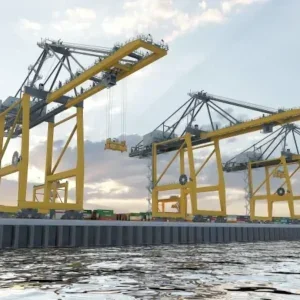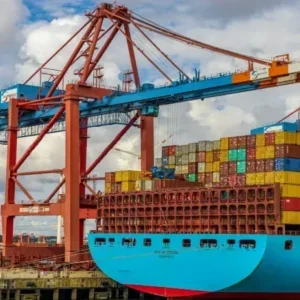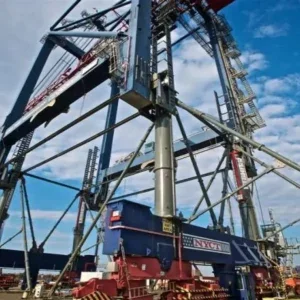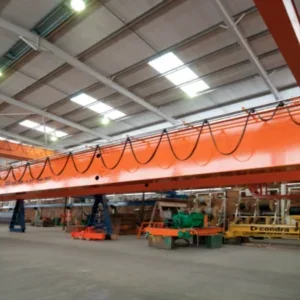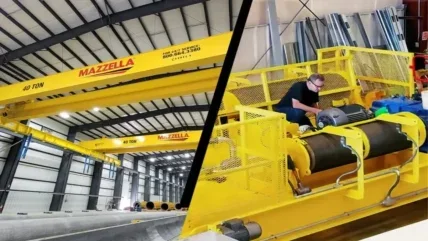
In the digital age, misinformation and disinformation have become pervasive issues affecting various industries, including the overhead lifting equipment and material handling sector. These phenomena can lead to significant consequences, from safety risks to financial losses and reputational damage. This article explores the impact of misinformation and disinformation on the industry, examining their sources, effects, and strategies for mitigation.
Understanding misinformation and disinformation
Defining misinformation and disinformation
- Misinformation: False or inaccurate information spread without malicious intent. It often arises from misunderstandings, errors, or lack of verification.
- Disinformation: Deliberately false information disseminated with the intent to deceive or manipulate public perception. This can be part of larger strategic efforts to mislead stakeholders or damage reputations.
Sources of misinformation and disinformation
- Social Media: Platforms where unverified information can quickly go viral, reaching large audiences.
- News Outlets: Errors in reporting or biased coverage can contribute to spreading misinformation.
- Industry Forums and Blogs: Inaccurate technical information and unverified rumours can circulate within industry-specific communities.
- Competitors: In some cases, competitors may engage in disinformation campaigns to undermine rivals.
Impact on the overhead lifting and material handling industry
Safety risks
Safety is paramount in the overhead lifting and material handling industry. Misinformation and disinformation can compromise safety in several ways:
- Misleading Safety Protocols: Incorrect information about safety standards and procedures can lead to hazardous working conditions.
- Faulty Equipment Information: Inaccurate details about equipment capabilities or maintenance requirements can result in equipment failures and accidents.
- Training Gaps: Misinformation in training materials can lead to improper handling and operation of equipment, increasing the risk of incidents.
Operational inefficiencies
Operational efficiency can be severely impacted by misinformation and disinformation:
- Supply Chain Disruptions: False reports about supplier reliability or product availability can disrupt supply chain planning and logistics.
- Delayed Decision-Making: Uncertainty caused by conflicting information can delay critical decisions, affecting project timelines and costs.
- Resource Misallocation: Responding to false information can lead to the misallocation of resources, such as time and money spent verifying or debunking rumours.
Financial and reputational damage
The financial and reputational impacts of misinformation and disinformation are substantial:
- Market Volatility: False information about company performance or market conditions can lead to stock price fluctuations and investor uncertainty.
- Loss of Trust: Customers and partners may lose trust in a company if they perceive it as unreliable or dishonest due to misinformation.
- Legal Implications: Spreading or failing to correct misinformation can result in legal liabilities and regulatory penalties.
Strategies for mitigating misinformation and disinformation
Robust information verification
Implementing robust verification processes is crucial to combat misinformation:
- Fact-Checking: Establish a dedicated team or use third-party fact-checking services to verify information before dissemination.
- Source Verification: Always verify the credibility of sources before accepting or sharing information. Prefer official and reputable sources.
- Cross-Referencing: Cross-reference information with multiple sources to ensure accuracy and reliability.
Enhanced communication protocols
Effective communication can help mitigate the spread of misinformation and disinformation:
- Clear Messaging: Develop clear, concise, and consistent messaging for internal and external communications.
- Proactive Engagement: Proactively engage with stakeholders, including employees, customers, and suppliers, to provide accurate information and dispel rumours.
- Crisis Communication Plans: Develop and regularly update crisis communication plans to address misinformation quickly and effectively.
Leveraging technology
Technology can be a powerful tool in combating misinformation:
- Monitoring Tools: Use monitoring tools to track the spread of information across digital platforms and identify potential misinformation early.
- Artificial Intelligence: Implement AI solutions to analyse large volumes of data and detect patterns indicative of misinformation or disinformation.
- Blockchain for Data Integrity: Explore blockchain technology to ensure data integrity and transparency in supply chain transactions.
Industry collaboration
Collaboration within the industry can strengthen efforts to combat misinformation:
- Industry Associations: Participate in industry associations to develop collective strategies and share best practices for combating misinformation.
- Joint Initiatives: Engage in joint initiatives with other companies to promote accurate information and counteract disinformation campaigns.
- Regulatory Partnerships: Work closely with regulatory bodies to ensure compliance and support industry-wide efforts to maintain information integrity.
Case studies: industry responses to misinformation and disinformation
Case study 1: fact-checking initiatives
A major overhead crane manufacturer faced a wave of misinformation regarding the safety of its products after a competitor’s disinformation campaign. In response, the company established a fact-checking team to verify and correct false claims. By publishing verified information and engaging with media outlets, the company successfully restored its reputation and regained customer trust.
Case study 2: proactive communication
A material handling firm experienced operational disruptions due to misinformation about supply chain delays. The company implemented proactive communication protocols, including regular updates to stakeholders and transparent reporting on supply chain status. This approach helped maintain stakeholder confidence and minimise the impact of the misinformation.
Case study 3: technological solutions
An industry consortium developed a blockchain-based platform to enhance data transparency and integrity in the supply chain. By ensuring that all transactions and data points were securely recorded and verifiable, the consortium significantly reduced the risk of misinformation affecting supply chain operations.
The future of information integrity in the industry
Embracing digital literacy
Digital literacy is essential for both employees and stakeholders to recognise and combat misinformation:
- Training Programmes: Implement training programmes to educate employees about identifying and responding to misinformation.
- Stakeholder Education: Develop educational materials for customers and partners to help them discern accurate information from false claims.
- Continuous Learning: Promote a culture of continuous learning to keep up with evolving digital landscapes and misinformation tactics.
Strengthening regulatory frameworks
Enhanced regulatory frameworks can provide a foundation for combating misinformation:
- Industry Standards: Advocate for the development and enforcement of industry standards related to information integrity.
- Compliance Mechanisms: Implement compliance mechanisms to ensure adherence to regulatory requirements and best practices.
- Government Collaboration: Collaborate with government agencies to support regulatory initiatives and promote information integrity.
Innovative solutions for information integrity
Innovation will play a crucial role in maintaining information integrity:
- Data Analytics: Invest in advanced data analytics to detect and address misinformation in real-time.
- Transparency Tools: Develop tools and platforms that enhance transparency and trust in industry information.
- Collaborative Innovation: Engage in collaborative innovation with technology providers to develop cutting-edge solutions for combating misinformation.
Conclusion
Misinformation and disinformation pose significant challenges to the overhead lifting equipment and material handling industry. By implementing robust verification processes, enhancing communication protocols, leveraging technology, and fostering industry collaboration, companies can effectively combat these threats. Embracing digital literacy, strengthening regulatory frameworks, and pursuing innovative solutions will ensure the industry’s resilience and integrity in the face of misinformation. As the digital landscape continues to evolve, proactive strategies and adaptive measures will be essential for sustaining growth and maintaining trust in the industry.


